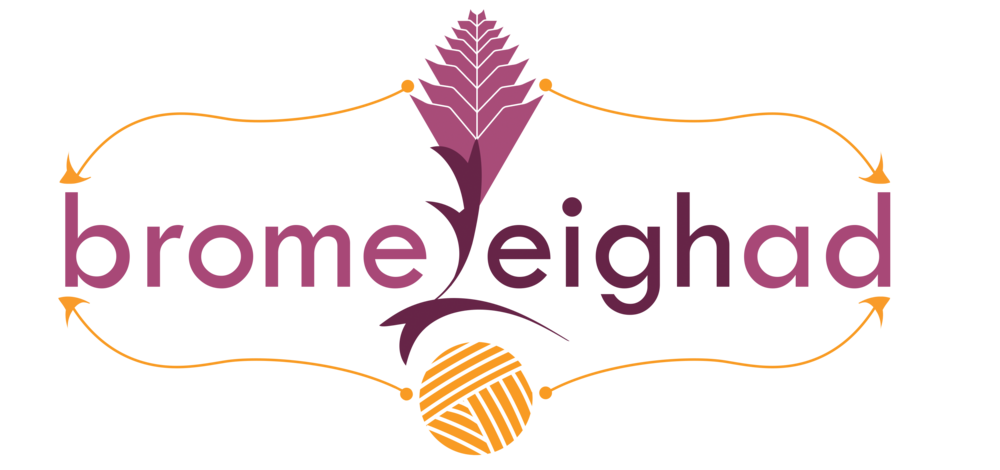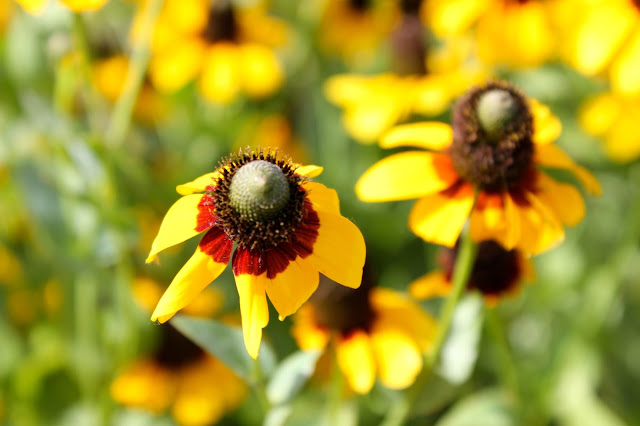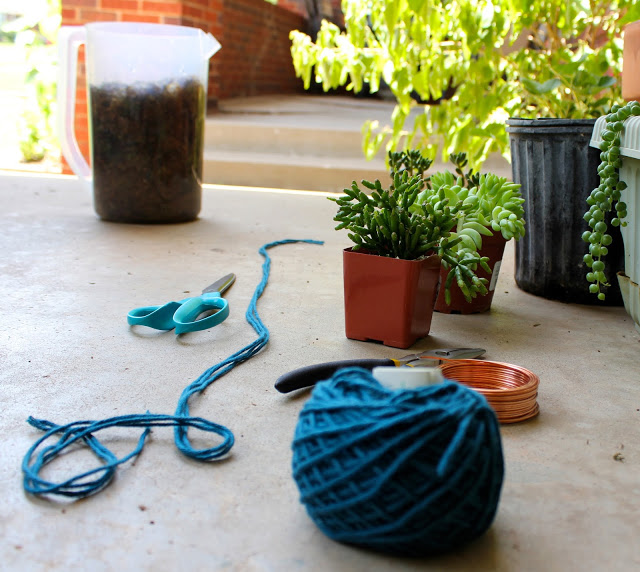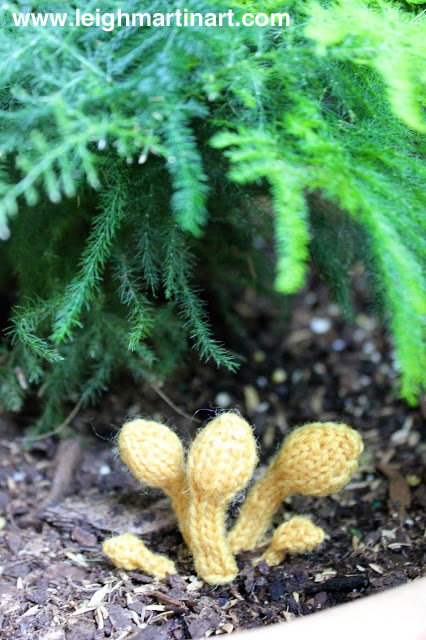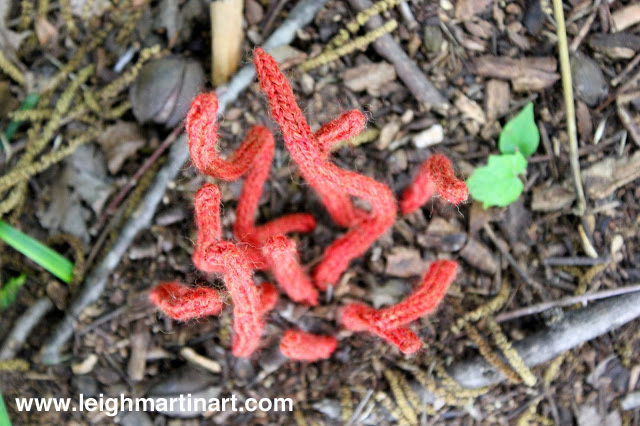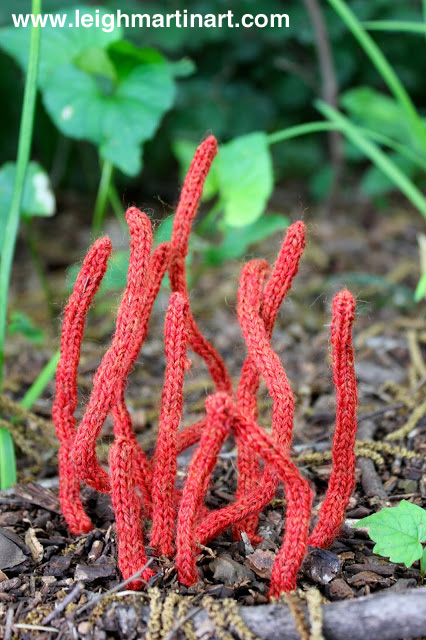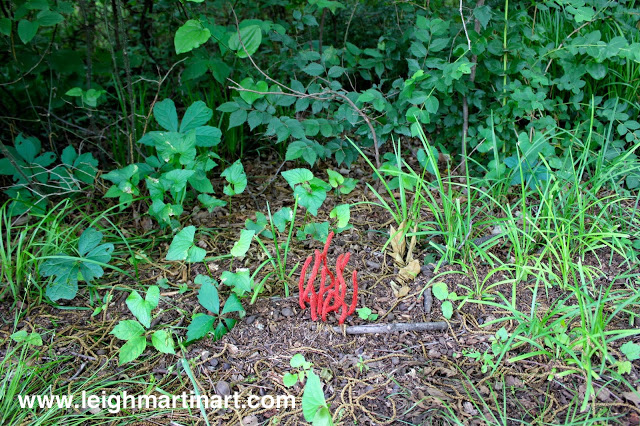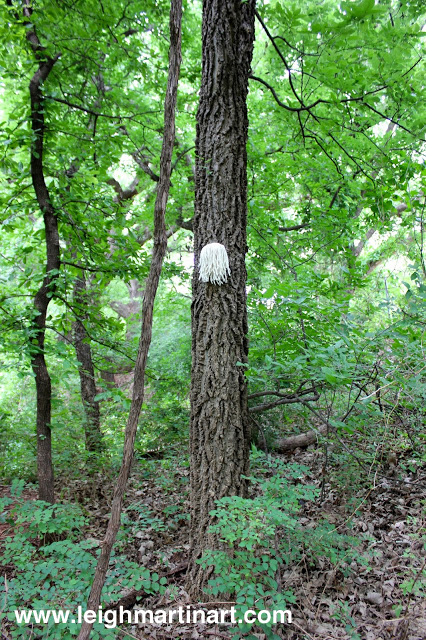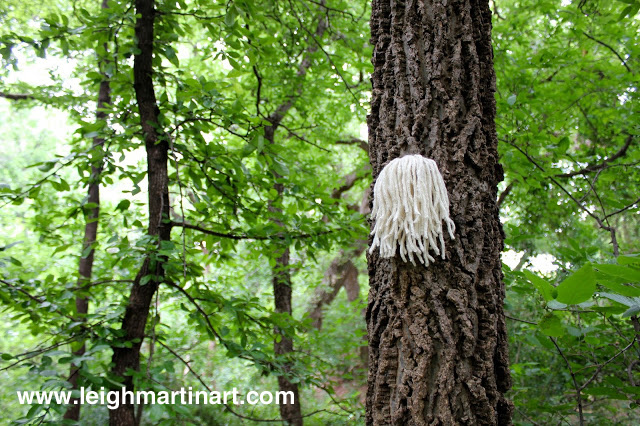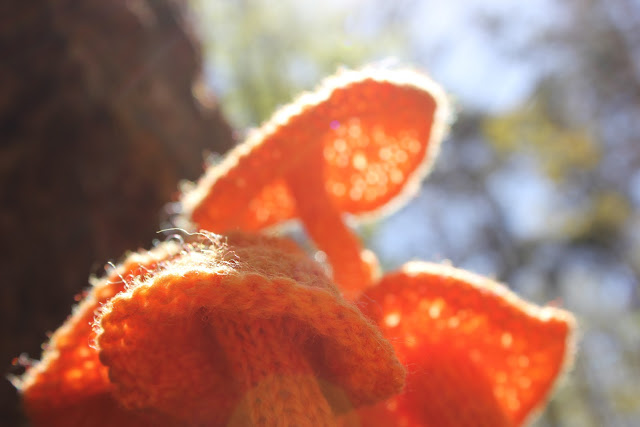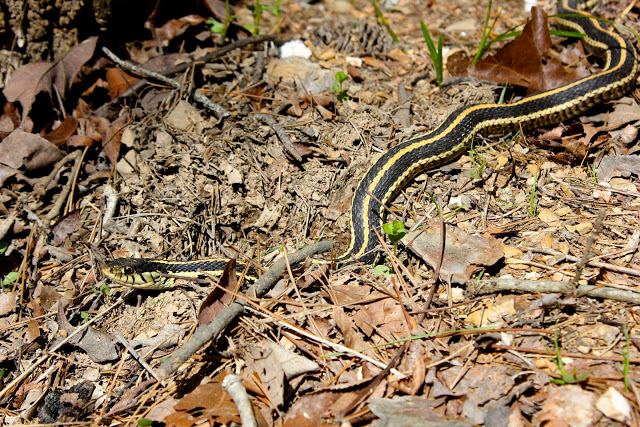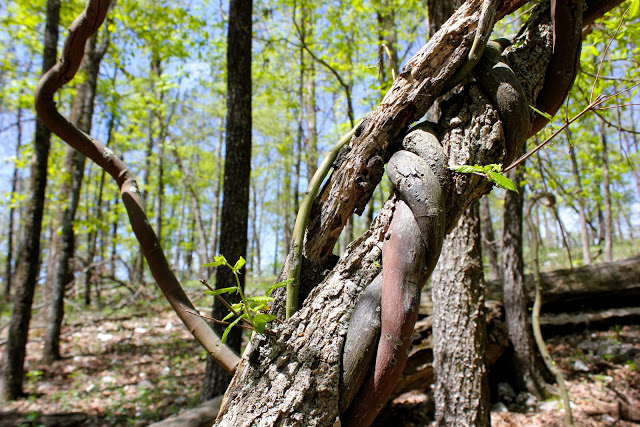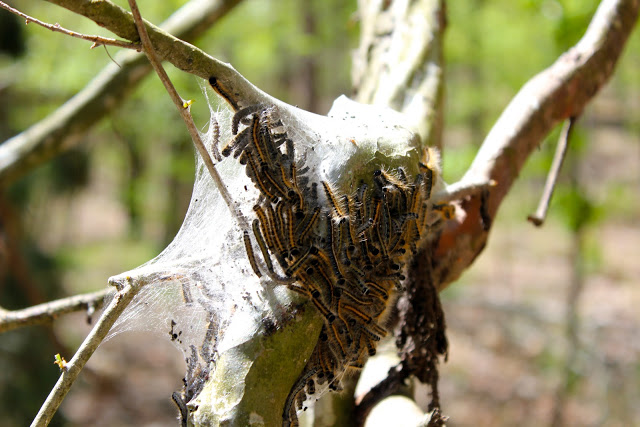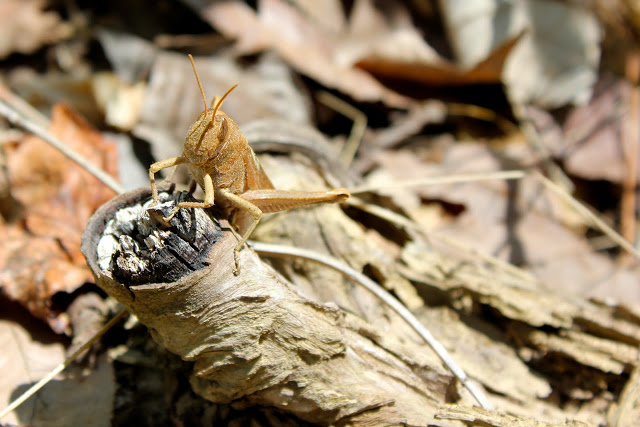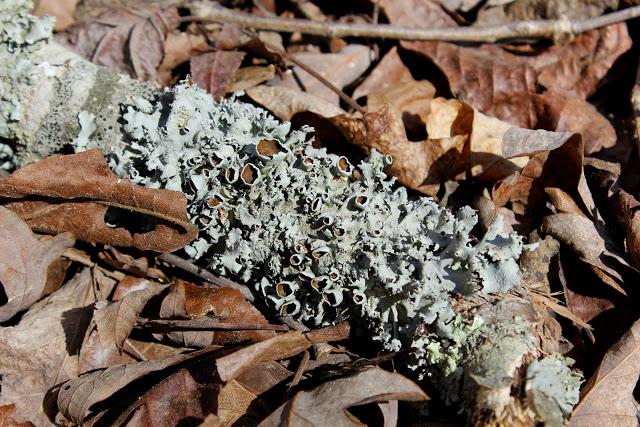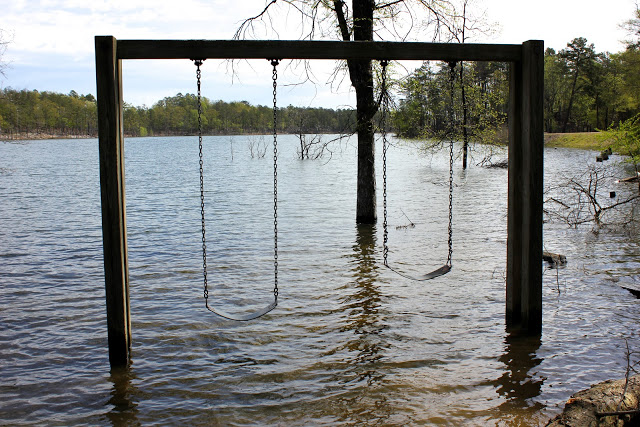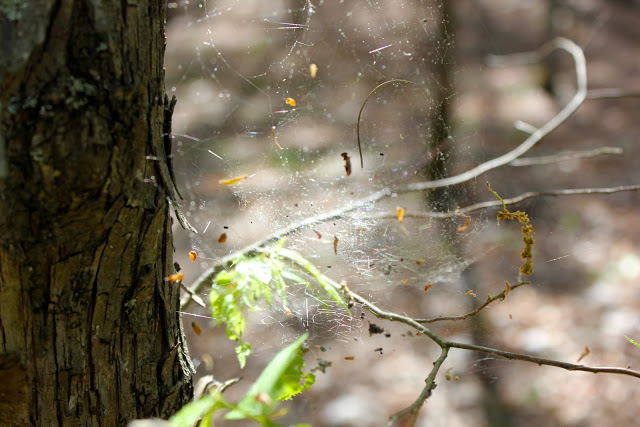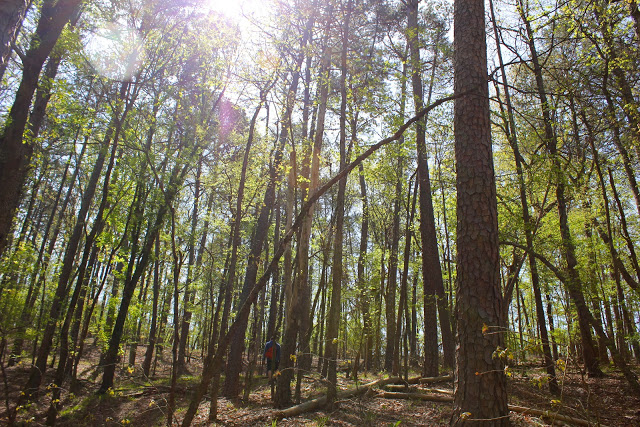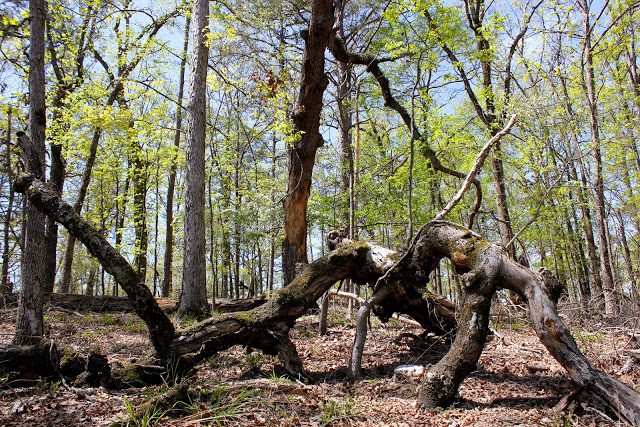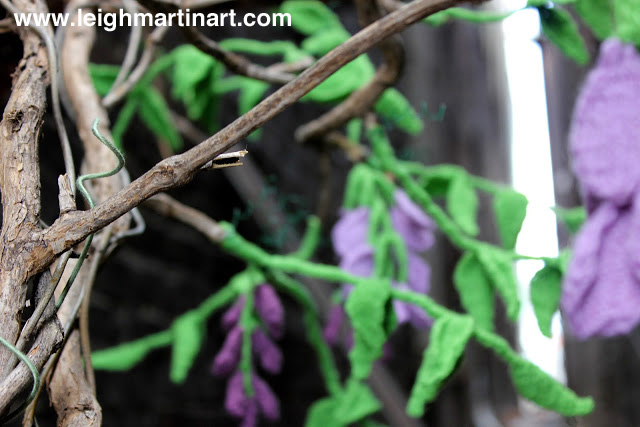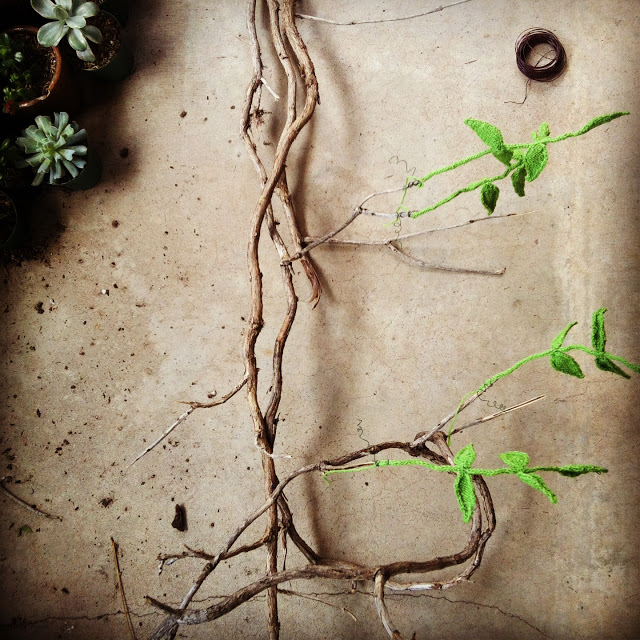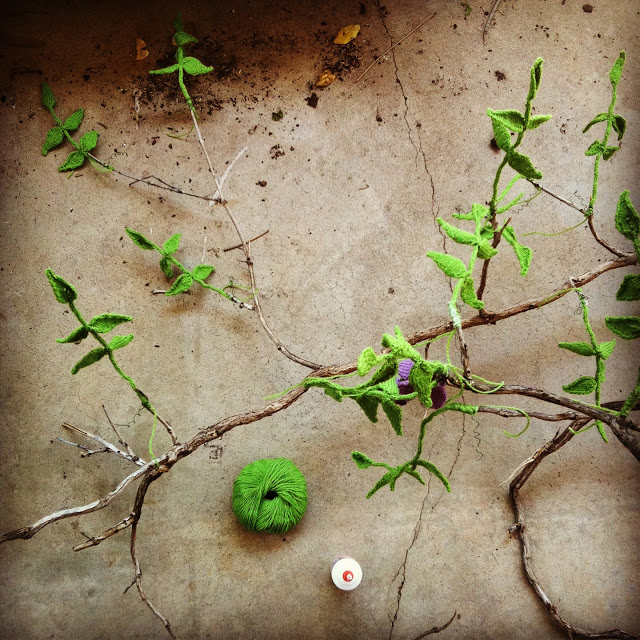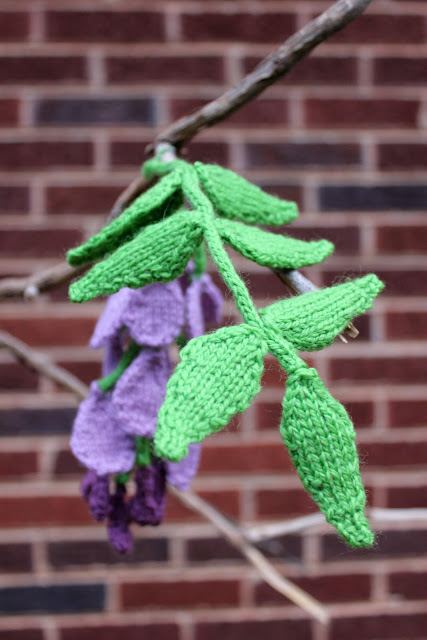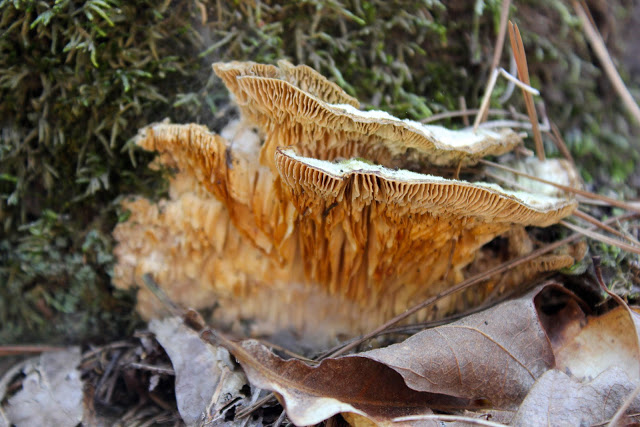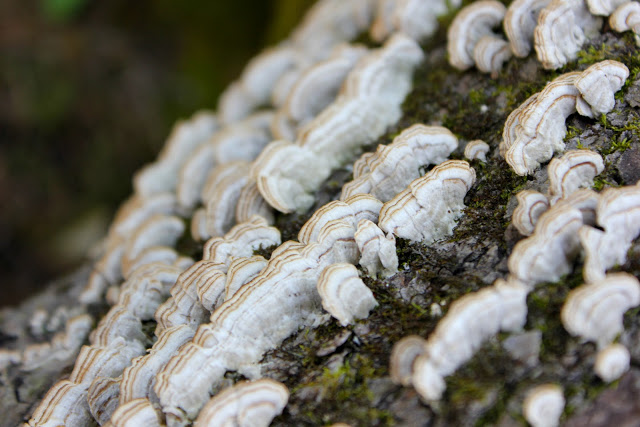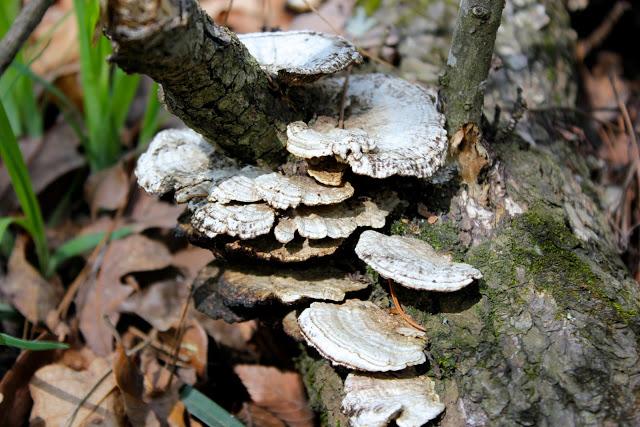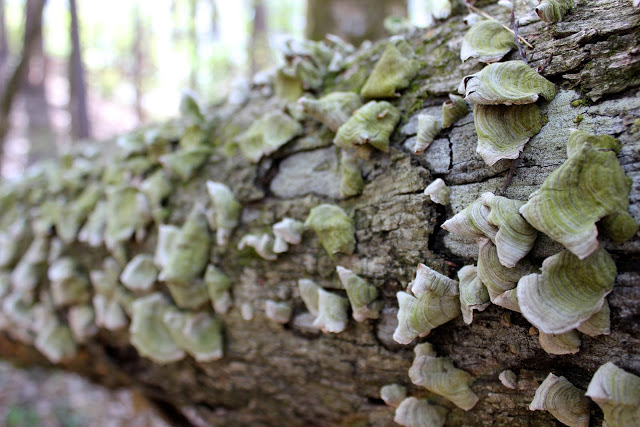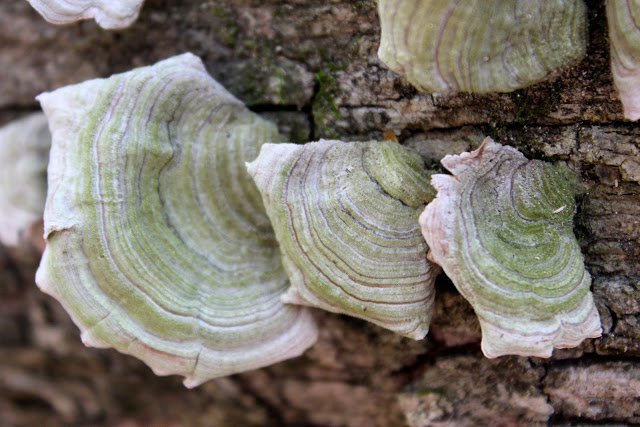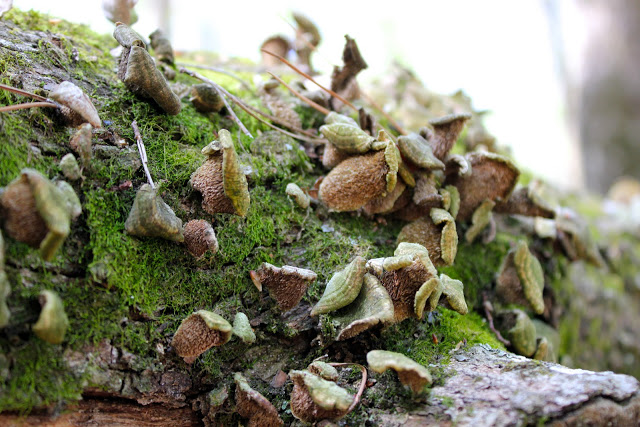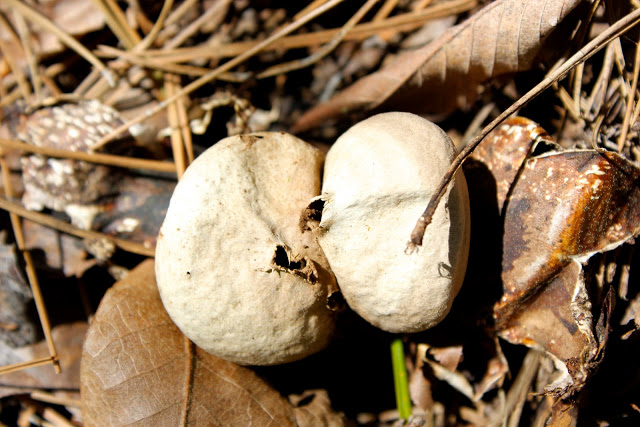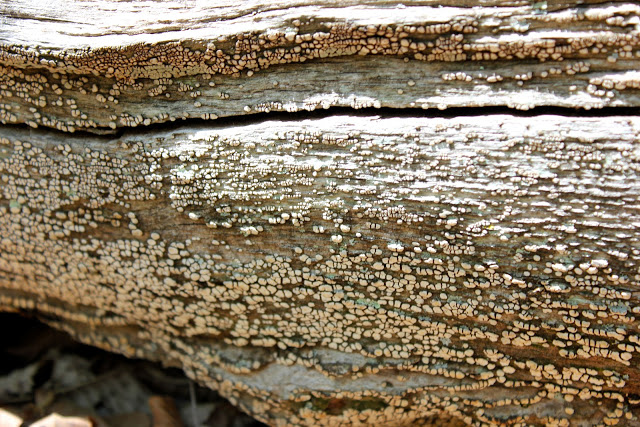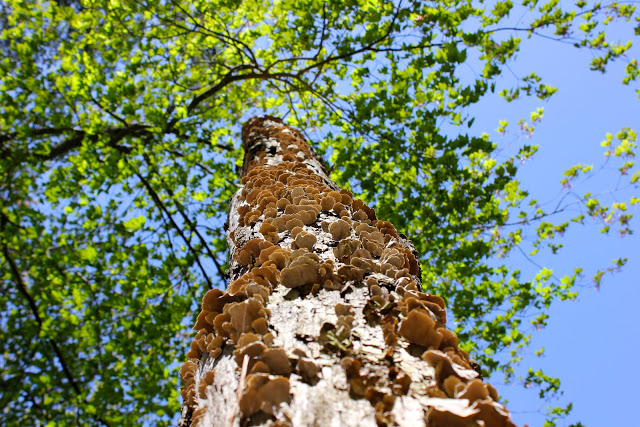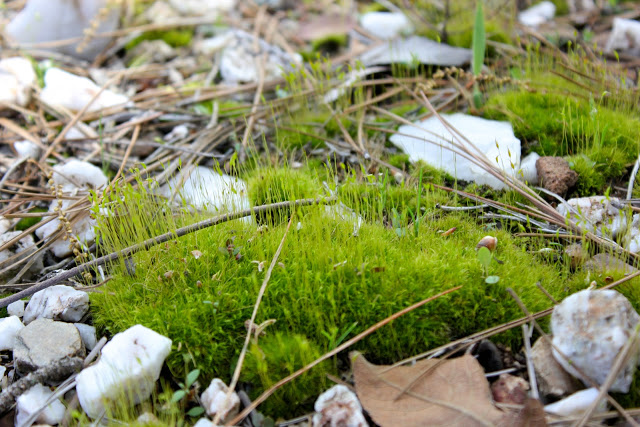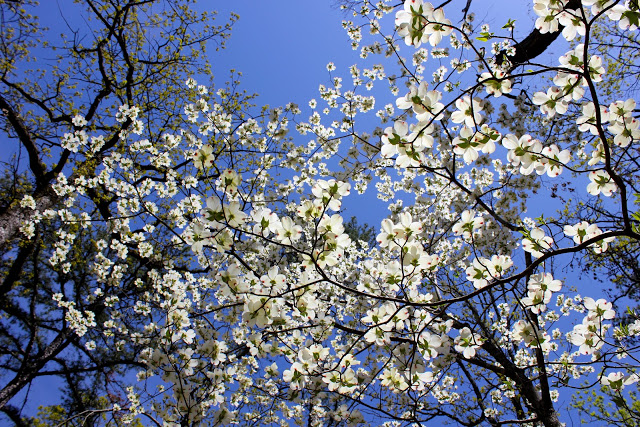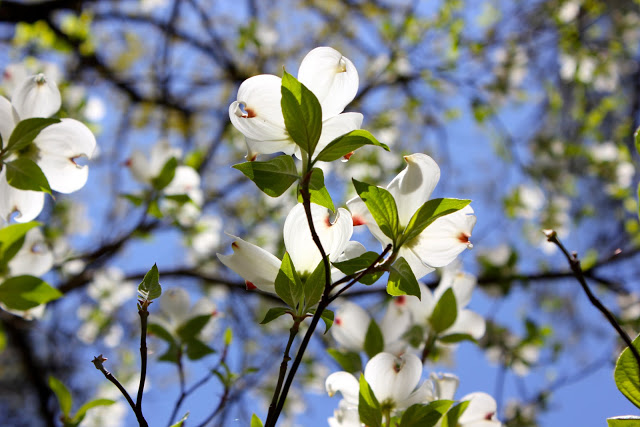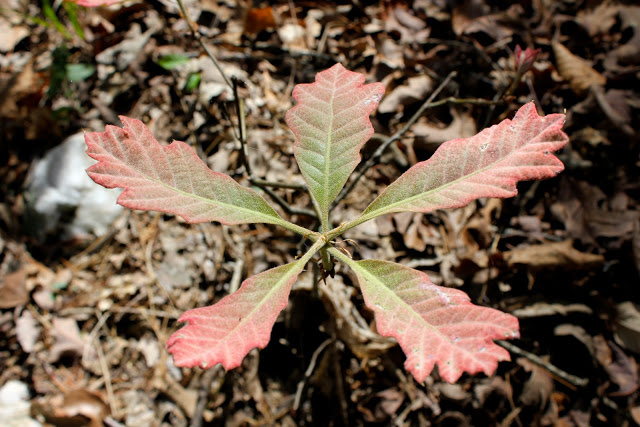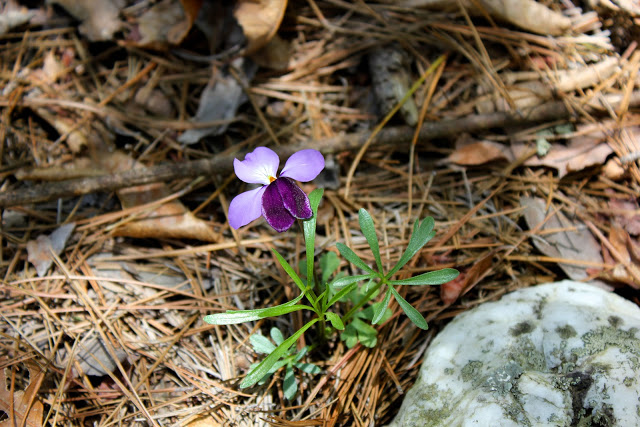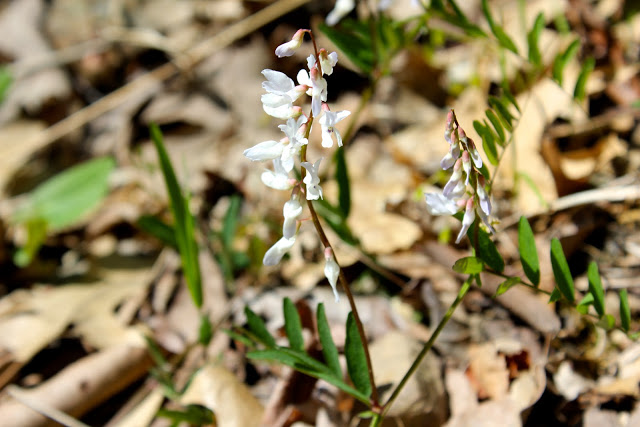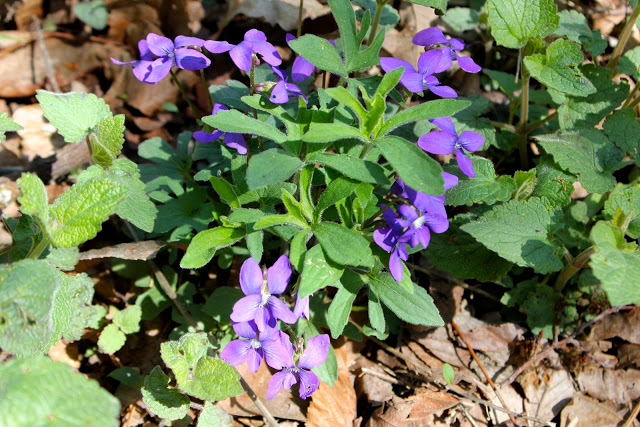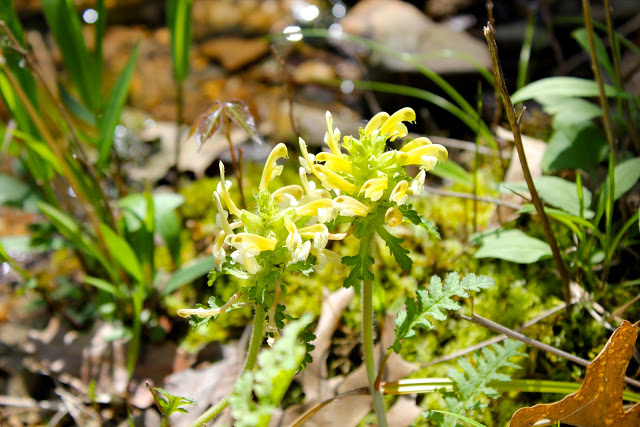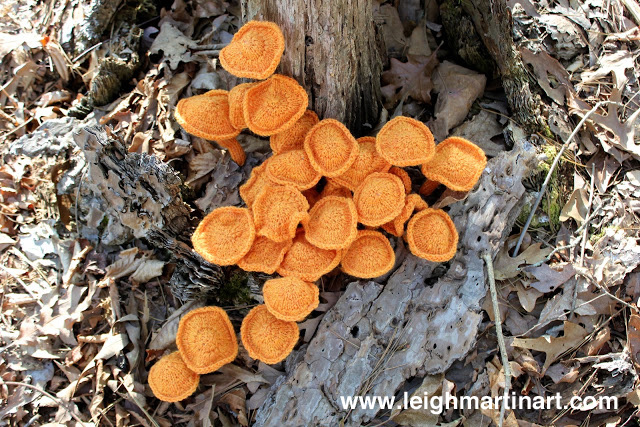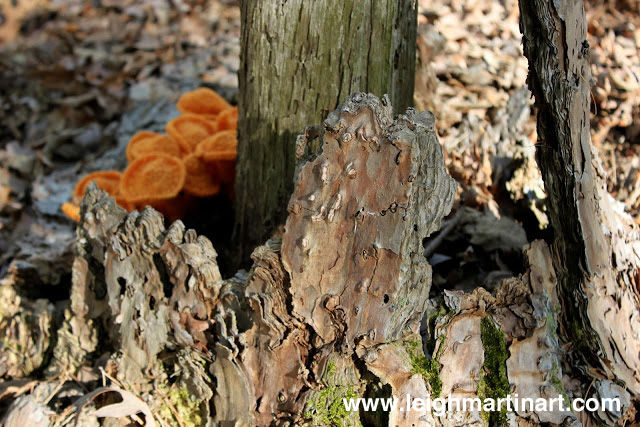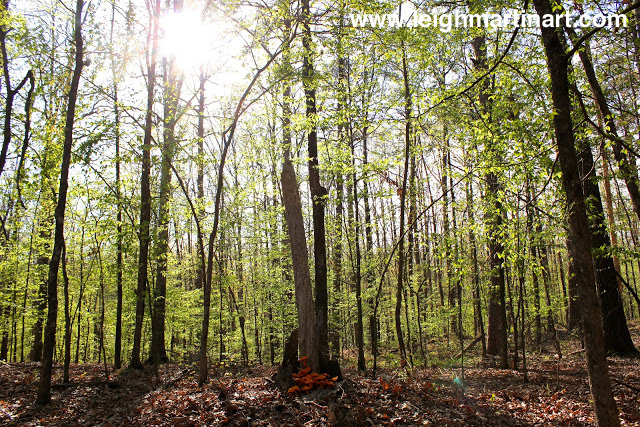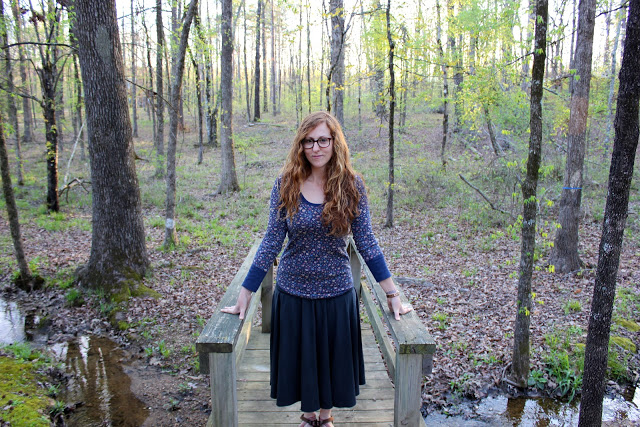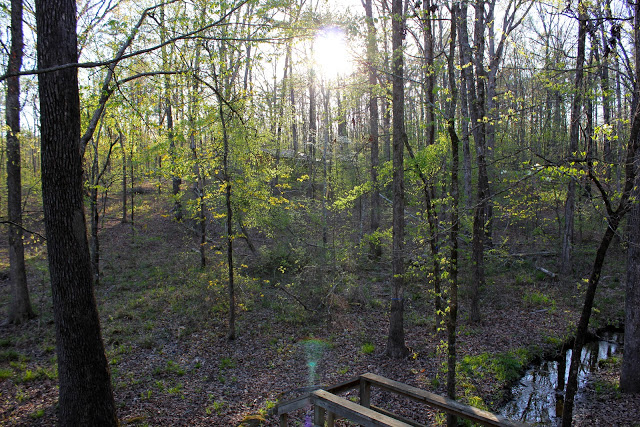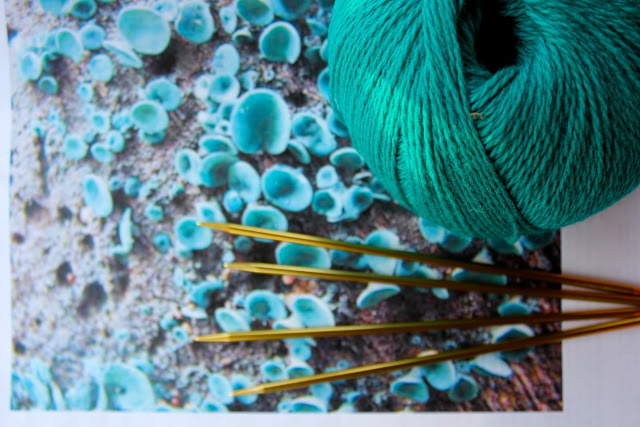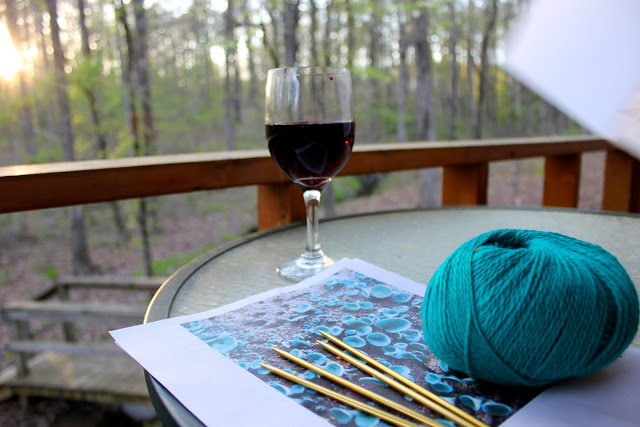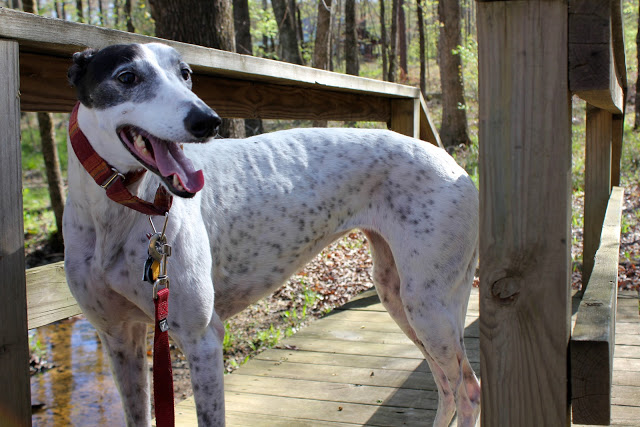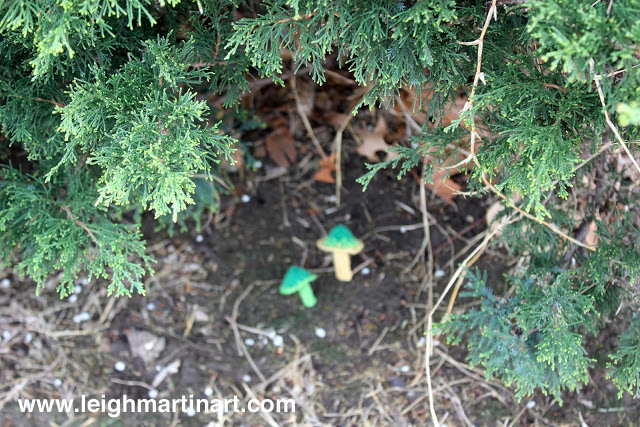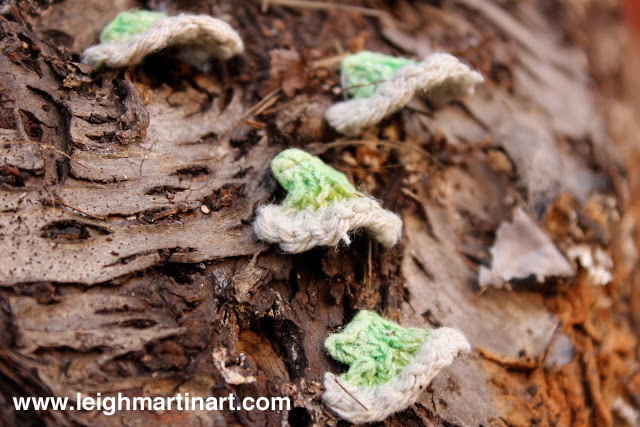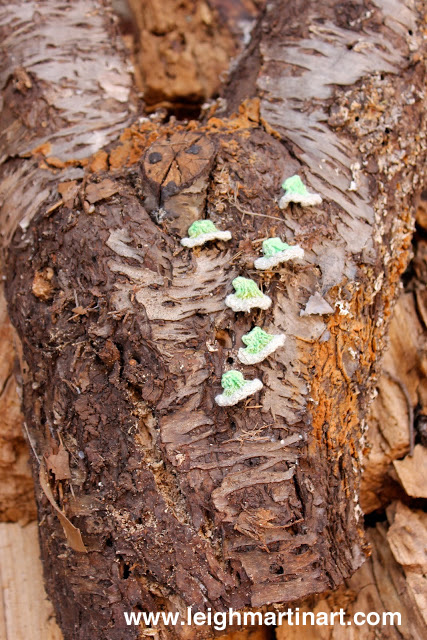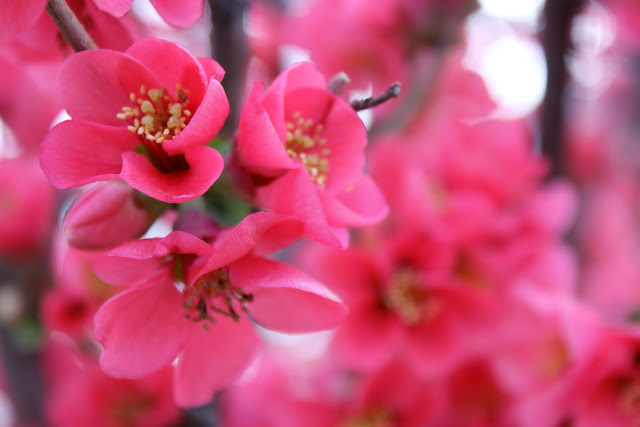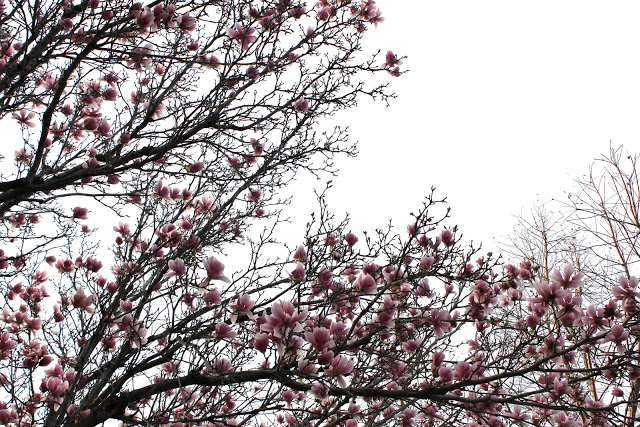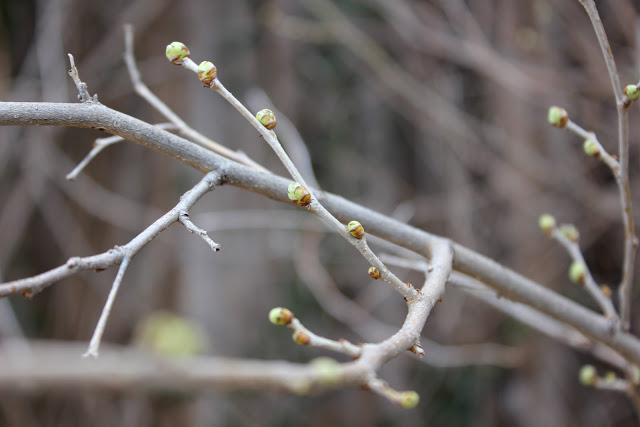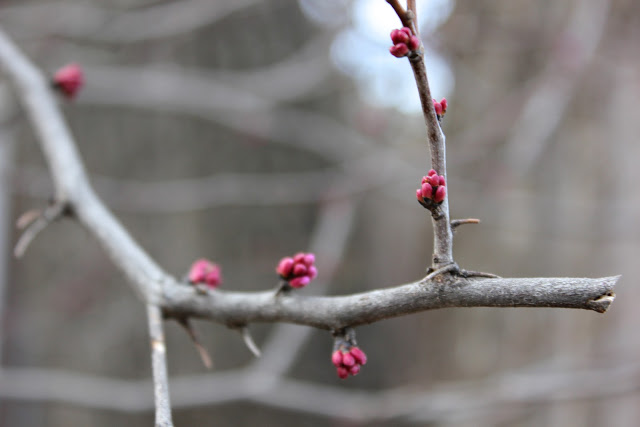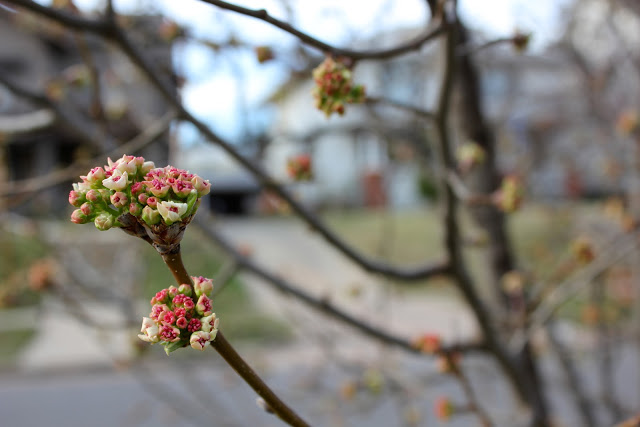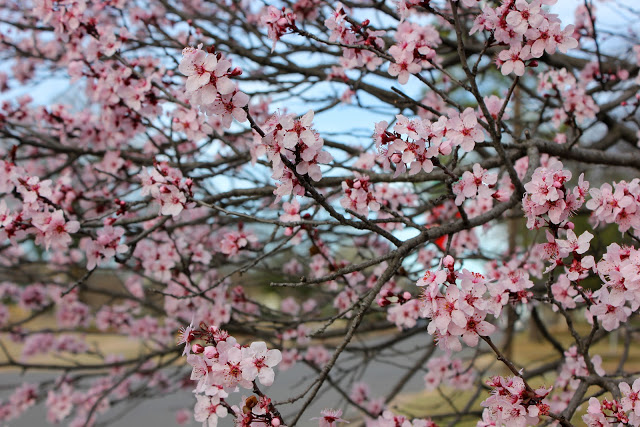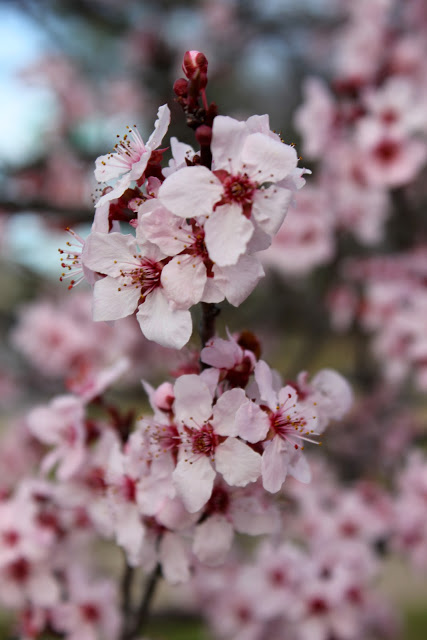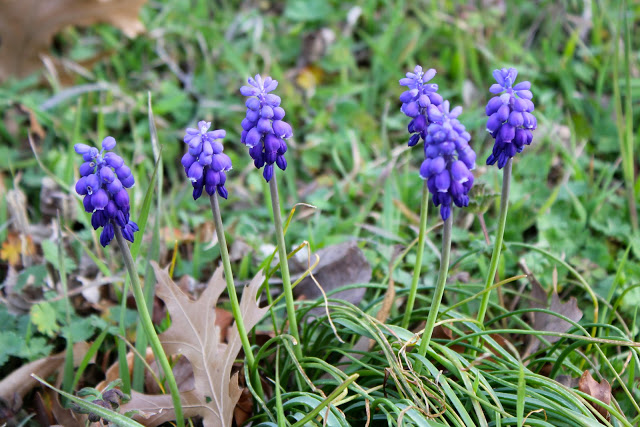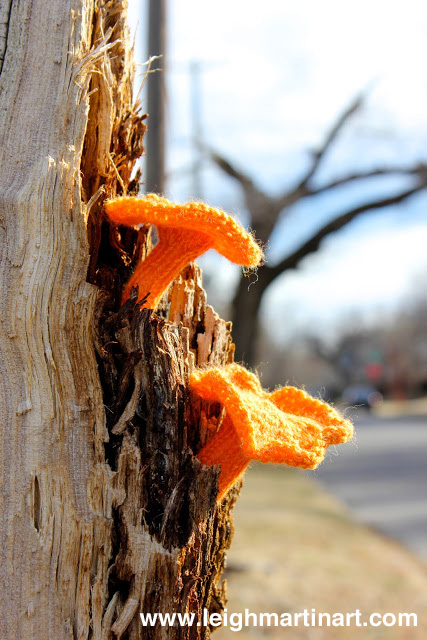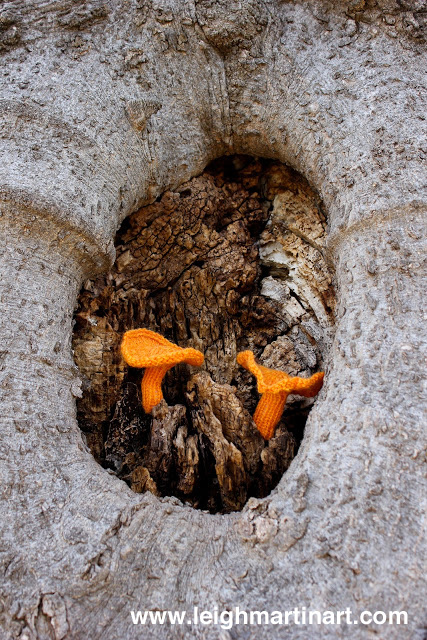Materials: yarn, dried vine, wire
Dyed-in-the-wool is an installation that I recently created for
Rare Earth, an exhibition at
Plug Projects in Kansas City.
Rare Earth "features work that borrows materials and figures from the natural world to reevaluate the nature of nature and examine the many landscapes we all inhabit. Geodes, lichen, wind and water, fungi and fauna explore the possibilities of symbiosis, the interventions of pollution, and imaginatively refigure the terrestrial through painting, photography and sculpture. Considering human mediation into all of the ecologies we encounter, Rare Earth offers viewers new modes of seeing the world around them."
It is said that there are three ways in which to add pigment to a garment - after it is woven into its finished form, after it is spun into thread, and before it is spun - when it is still a mass of raw fiber. The phrase "dyed-in-the-wool" refers to fiber that has been subjected to pigment - raw fiber - wool that has not yet been manipulated into something else. Applying this idiom to human existence ties it to our foundational beliefs and ways of our nature. What we were melded into before we dumped experience on top. How our upbringing shaped us.
When I was considering a title for this installation, the idiom "dyed-in-the-wool" struck a chord with me not just because of the obvious literal connection of a fiber sculpture that was quite literally knitted with wool, but because it conveys exactly my perception of vegetation in an urban environment.
Do you ever walk by an abandoned lot or an alleyway and notice the vines and herbs that have sprouted through the cracks in the pavement, clung to the brick of an adjacent building, and in a way seem to have reclaimed the space? It's remarkable that despite the extremely harsh environment we see in our urban areas, this flora still perseveres. They are, after all, engineered for survival. We eliminate the growing conditions conducive to coexistence with plant life, and yet they still find a way. They are "dyed-in-the-wool" growing machines and will continue to thrive in very little soil volume with poor soil fertility, little water, an abundance of contaminants and air pollution. Yet, how often do we walk on by without giving it a second thought?
I do want to note that I am in no way discrediting the huge problem that invasive plants have become in natural areas surrounding our communities. Native plants and wildlife have been displaced due to this issue and I recognize that it's a very serious matter.
This piece is my effort to point out the wonders that we are surrounded by, how remarkable they are and that this beauty can exist despite the challenge of urban conditions. It can be so moving to take a moment to just observe the growth and life around us. A moment of encouragement, replenishment and hope.
